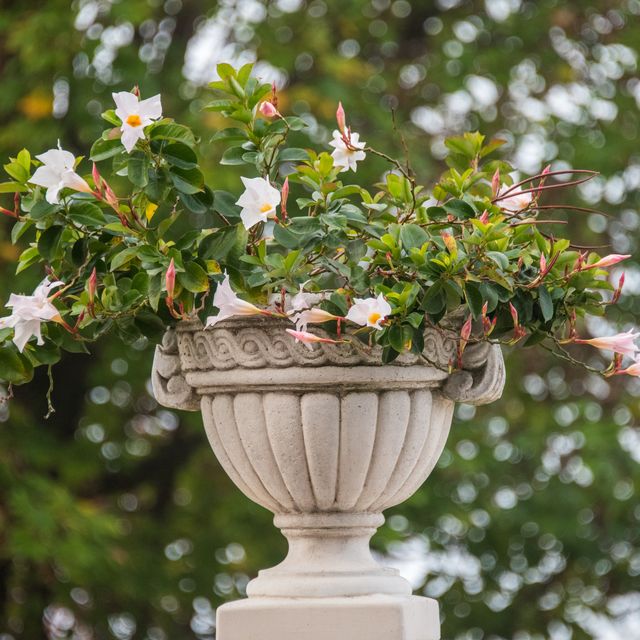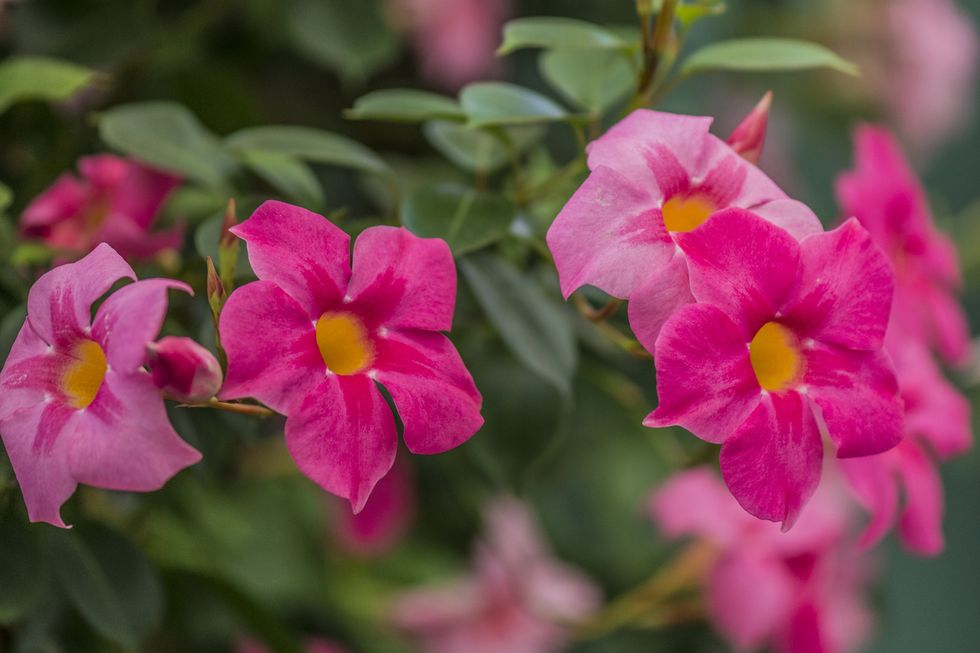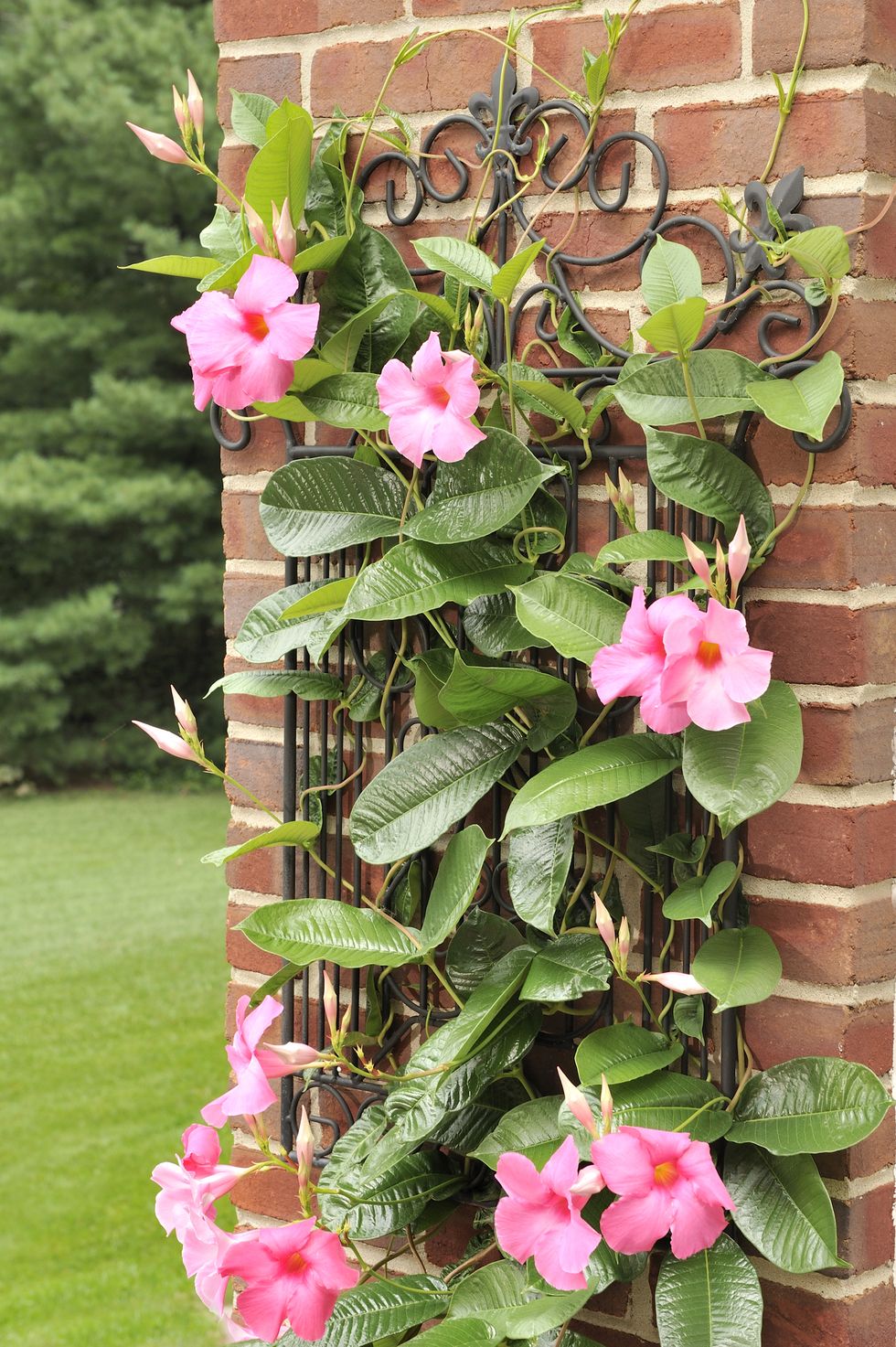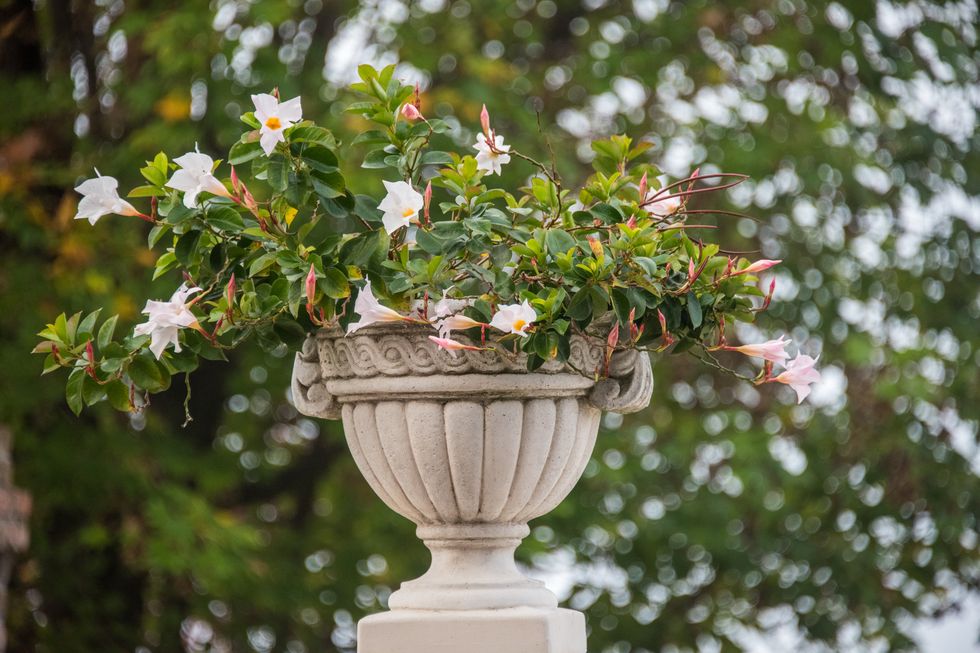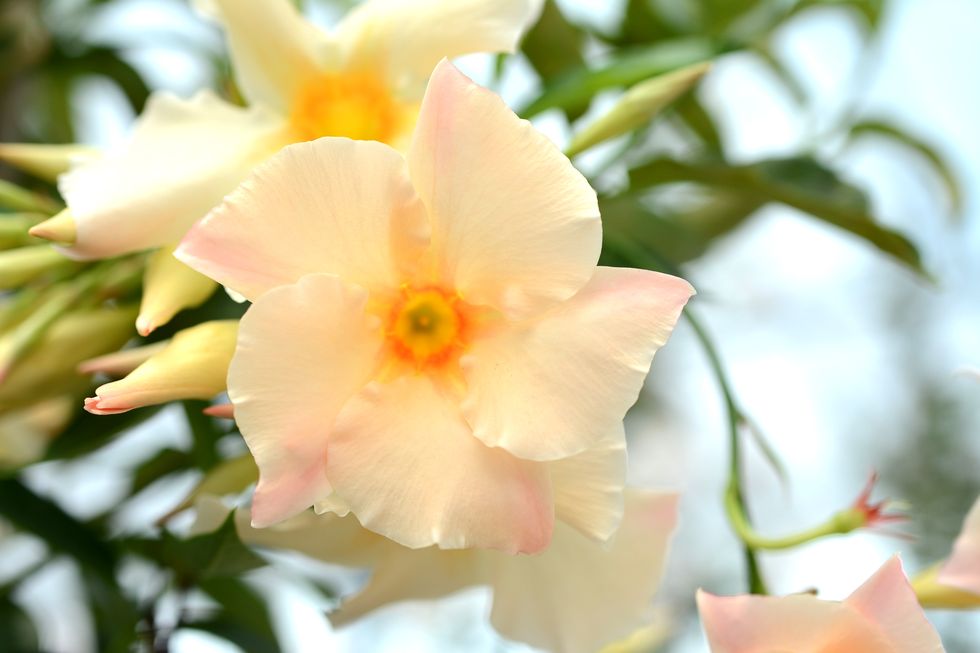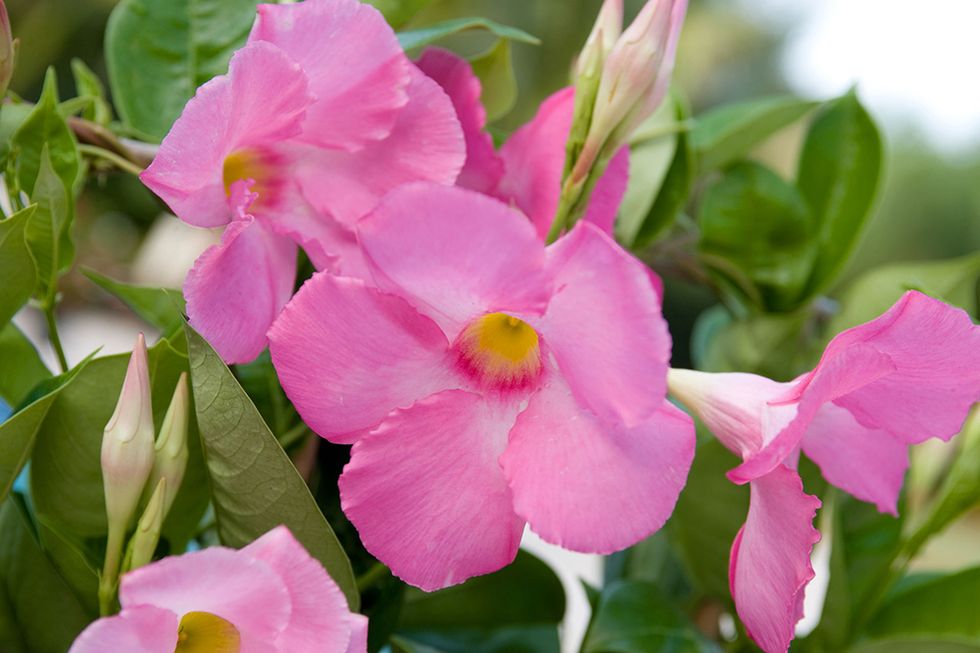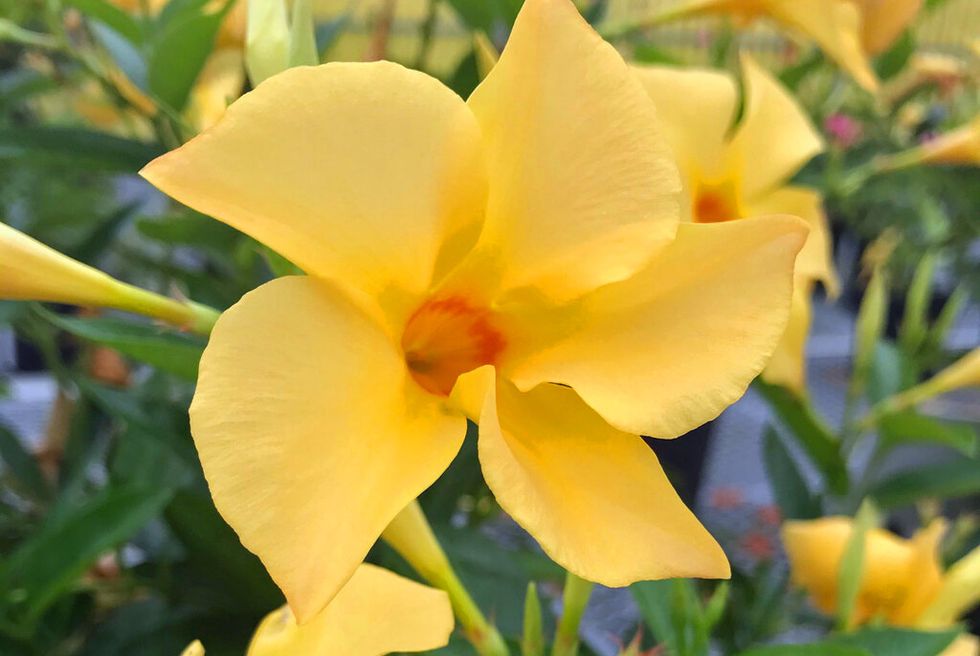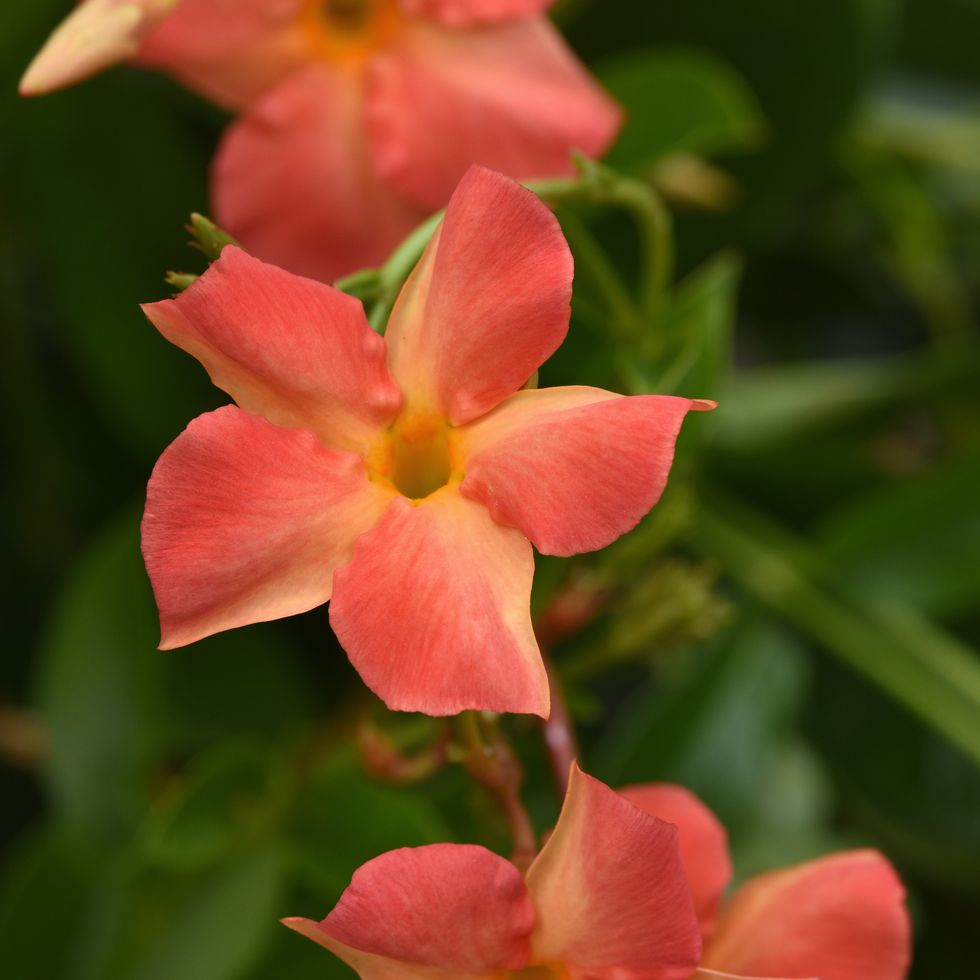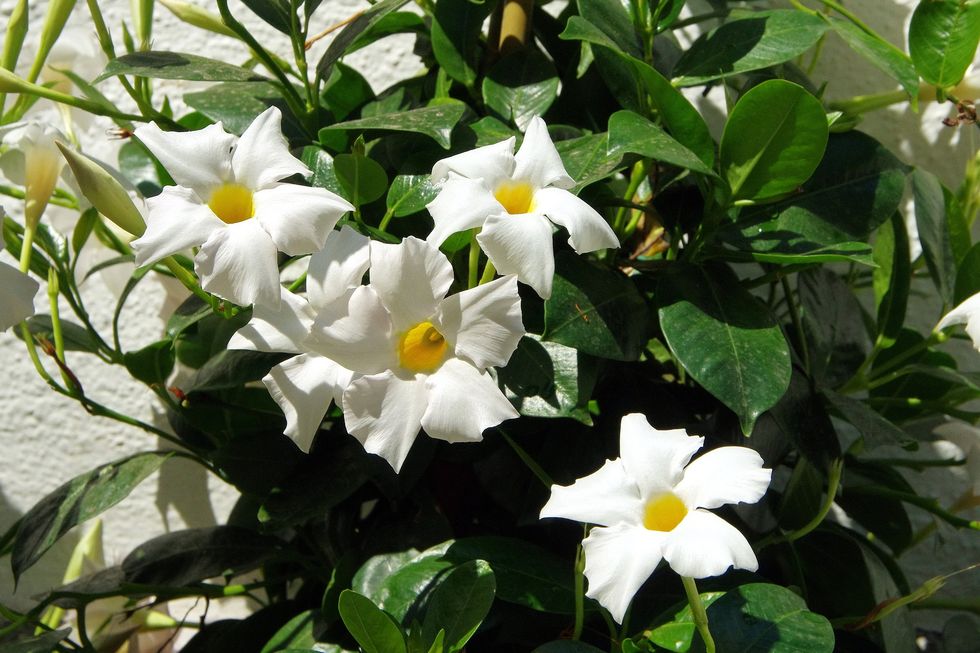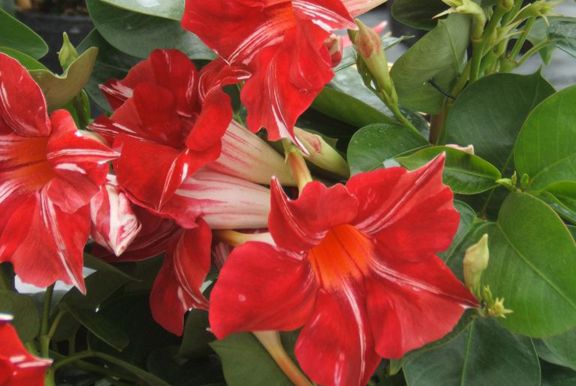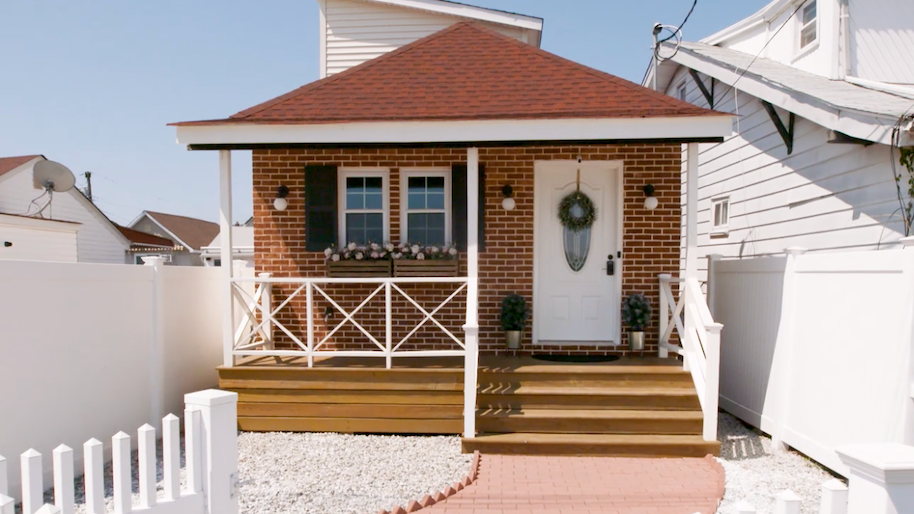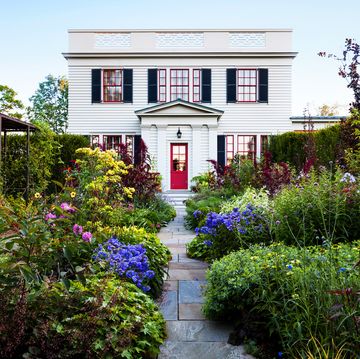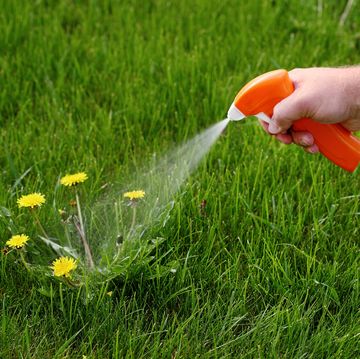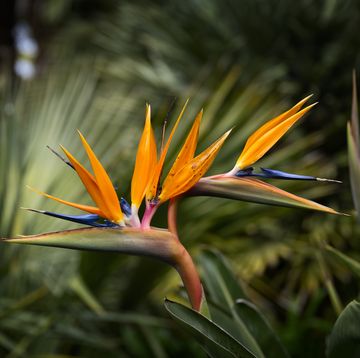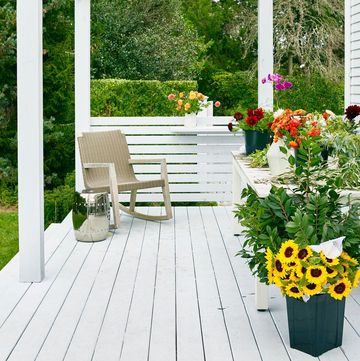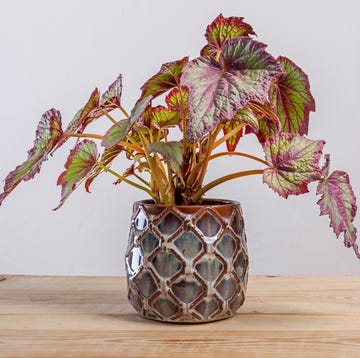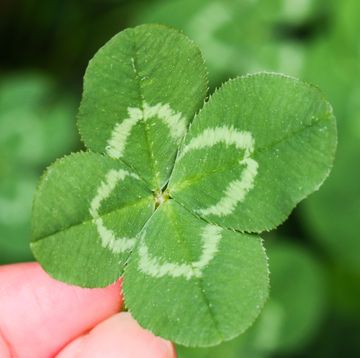With its glossy green foliage and flashy trumpet-shaped flowers, the mandevilla plant is a stunning low-maintenance option for endless summer color. This tropical plant has showy clusters of flowers in shades of white, pink, red, yellow, and apricot that keep growing and producing more blooms.
Native to Brazil, mandevilla is right at home on a sunny patio, where it will provide season-long color from early summer to the first frost. Its flowers attract hummingbirds and bees, so it's a great choice if you're planning a pollinator-friendly garden. And deer tend to leave it alone, so go ahead and plant it in containers and landscape plantings even if Bambi frequently comes to call in your garden.
Although mandevilla typically is treated like an annual, it can be perennial in warm climates, such as USDA Hardiness zones 10 and 11. In cold climates, you can bring it indoors in the fall to save it for the next spring.
Most varieties of mandevilla are climbing and vining plants, similar to a bougainvillea plant, though new hybrids have been developed to take on a bushier, more compact shape. These smaller plants, which sometimes get labeled as dipladenia, look amazing spilling over the edges of mixed planters or hanging baskets. Read on to learn more about how to plant, grow, and care for the tropical mandevilla plant.
How and When to Plant Mandevilla
You can plant mandevilla in pots or in landscape beds. It likes well-draining soil, so if you have heavy clay soil in your yard, plant in containers instead. Climbing types of mandevilla twine themselves quickly and easily up a trellis. Just place the support in the pot at planting time so it has somewhere to climb right away.
Where to Plant Mandevilla
A mandevilla plant likes to be in a spot that gets full sun, which is considered six or more hours of direct sunlight per day. The only exception is if you live in a very hot climate; in that case, it will benefit from a little afternoon shade.
How to Care for a Mandevilla Plant
Light
Mandevilla needs full sun, which is considered six or more hours of direct sunlight, or it won't bloom well. In hot climates, it does prefer some afternoon shade. In cold climates, it can handle all-day sun.
Soil and Water
Your mandevilla is super easy to care for, though you need to make sure to keep it watered. It prefers to stay a little moist, though not sopping wet. Pots tend to dry out faster than planting beds because moisture evaporates more quickly, so check your containers daily, especially during hot, dry spells.
Temperature and Humidity
Mandevilla plants like tropical conditions, so temperatures from the 60s to mid-90s are fine. It does like lots of humidity, which is why it sometimes suffers if you try to overwinter it indoors (the low humidity levels in our homes in winter are tough on many tropical plants).
Fertilizer
To keep your mandevilla blooming vigorously, feed it with any general-purpose fertilizer regularly, according to the package instructions. A granular extended-release type is ideal.
Pruning
It's not entirely necessary to prune a mandevilla plant, but occasional trims can help keep your plant looking full and lush. Sinip off pieces wherever your plant is getting a little leggy or unruly. Pruning also encourages branching and more buds. Just be sure to wear gloves because the milky sap can irritate some people's skin.
How to Overwinter a Mandevilla Plant
In warm climates, mandevilla is a perennial. Everywhere else, it's usually treated as an annual. However, if you're feeling ambitious (or simply don't want to part with your gorgeous plant when fall temperatures start to dip), you can bring it indoors for the winter.
Now, we won't lie: This can be a little messy because, like other tropical plants, your mandevilla isn't going to like the lower light and humidity levels inside your house and will start to shed its leaves and buds in abundance. However, if you give it bright, indirect light, it should rebound in a few weeks' time.
Your mandevilla probably won't bloom inside your house, but come spring, when temps consistently are in the 50s, you can place it back outside in a sunny spot. If it's looking a little shaggy, trim it back almost to the soil. New shoots should develop at the base.
If overwintering your mandevilla plant sounds like too much work, no worries. You can simply treat it like an annual since these plants are widely available and generally not super expensive. Just buy yourself a new one next year.
How to Propagate a Mandevilla Plant
It's easiest to propagate mandevilla from cuttings. Cut a piece a few inches long from the tips or side shoots. Remove the leaves, dip it in rooting powder, then poke the cutting into the soil of a pot filled with fresh potting mix. Keep the pot in bright light, and keep the soil slightly moist.
Types of Mandevilla
Mandevilla Hybrid Sun Parasol Apricot
Mandevilla Hybrid Sun Parasol Giant Pink
Mandevilla Hybrid Sun Parasol Original Sunbeam
Coral Orange Sunrise Dipladenia
Mandevilla Hybrid Sun Parasol Giant White
Mandevilla Hybrid Sun Parasol Giant Red Emperor
Mandevilla Sun Parasol Stars & Stripes
Frequently Asked Questions
Can I Grow a Mandevilla Plant Indoors?
If you have a bright, sunny window or use an LED grow light, you can grow mandevilla indoors over the winter. However, because the light is so much less intense indoors than out, you shouldn't expect your plant to grow as vigorously indoors as it does outdoors.
When you bring it in for the winter, it also will drop some (or even most!) of its foliage. This should eventually level off, and your plant will hang on for the winter months. It may not look great, and it probably won't bloom. But if you can get it through the winter, it should rebound in the spring when you place it back outside after temps are consistently in the 50s and higher.
Make sure to acclimate the plant to the higher light levels outdoors by placing it in full sun for just an hour or so, then increasing the time gradually over the course of a week or two so that the foliage doesn't burn. Remember, it's not used to intense sun after a winter indoors, so take it slowly when reintroducing it to your garden.
Does Mandevilla Need a Trellis?
It depends! Most varieties are climbing vines, so they will need some kind of support to climb, such as a trellis or other structure. It should climb mostly on its own, but you can redirect the vines onto the trellis if they're getting a bit wild looking and trying to grab onto nearby plants or other structures where you don't want them.
The shrubby types don't require a trellis because they form a mounded shape.
Does Mandevilla Bloom All Summer?
Yes, a mandevilla plant produces flowers from early in the summer until the temperatures drop with the first frost.
What's the Difference Between Dipladenia and Mandevilla Plants?
Dipladenia is a name for some of the shrubbier varieties of mandevilla that grow well in planters or hanging baskets. They are related plants with subtle differences in foliage and flowers. New hybrids combining both plants also have been introduced.
